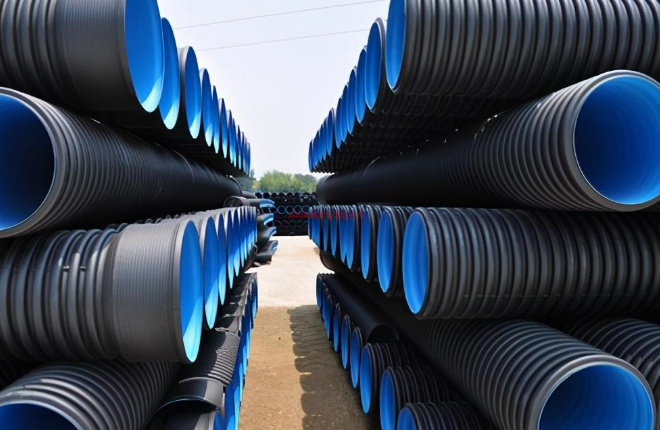The Siphon drainage system is an essential part of the building water supply and drainage system. Its task is to timely eliminate the rain, snow water landing on the roof of the building, to avoid the formation of roof water to the roof threat, or caused by rain overflow, roof leakage and other water accidents, so as to ensure people's normal life and production activities. The characteristic of siphon drainage system is that the horizontal pipe does not set the slope of the case, the formation of full pipe flow, with a extremely rapid speed to clear the water of the roof. The main components of the siphon drainage system are the siphon drainage pipe and rainwater bucket.
China HDPE parts factory says the difference between siphon drainage system and traditional gravity drainage system:
Siphon drainage features:
1. As long as the calculation requirements are met, there is no limit to the number of rainwater buckets carried by a single system;
2, the rainwater bucket flow is large, gas and water diversion, drainage speed is quick and the effect is excellent;
3, the suspension pipe is horizontal, no need to do any slope, convenient construction;
4, the riser pipe diameter is tiny, the number is tiny, easy to decorate;
5, fewer buried pipe, ground excavation workload is tiny, effectively shortening the construction period;

traditional gravity drainage features:
1. The number of rainwater buckets in a single system is limited;
2, the rainwater bucket flow is tiny, gas and water confluence, drainage effect is poor;
3, the riser pipe diameter is large, the number is large, the cross construction is easy to fight;
4. there are numerous buried pipes, large workload of civil construction, and easy return of water in the gutter.
A component of a siphon drainage system
What are the parts of the drainage system? It is usually composed of siphon rain pipe, pipe fitting and fixed parts. The following is the function introduction.
Component 1: Siphon rain hopper
This part is one of the most critical parts of the whole siphon drainage system. Typically, the better its steady flow, the lower the height of the siphon generated requires the roof catchment height, and the overall performance will be higher and more superior. Of course, the rainwater bucket also includes the reverse vortex top cover, the baffle plate, the base and the base branch pipe, etc., The most commonly used rated flow rate is 25L/S and 40L/S2.
Component 2: Pipe and fittings
The component is the meridian in the siphon drainage system, which can connect every place in the whole system and play a great role in the drainage. Even the pipe and fittings in the same system, their material is the best and the same, and also need to ensure that the material must have a compressive effect, so as to ensure the safety in use.
Component three: Fastener
Although this part is not remarkable in ordinary application, the components of this part play a highly significant role, which can effectively fix the pipe and withstand the weight of the full flow pipe and the effect of high-speed water. Especially for HDPE pipeline, numerous times should also be fixed by secondary suspension system, otherwise it will not be able to withstand the force brought by water.
Siphon drainage system:
As the most essential part of the siphon roof drainage system, the pipe must ensure the safe, reliable, efficient and sustainable operation of the system.
The Siphon system as a special drainage system, its pipes must ensure complete sealing and complete fire prevention measures, and do as much as possible to reduce the noise, absorb vibration, resist the impact of external forces, the maximum degree to meet the resistance to temperature changes caused by the deformation.
Since the siphon system uses negative pressure to drain water, the wall of the pipeline must have considerable bearing capacity. But it's not entirely rigid. Because the negative pressure of the siphon system is usually not greater than -0.08mpa. Excessive negative pressure will lead to overly rapid flow rate of water in the pipe, cavitation phenomenon,
Great damage to metal pipes or metal joints (-0.09Mpa is close to the critical value of cavitation). At the same time, extreme negative pressure will also bring great vibration to the system and reduce the service life of the system.